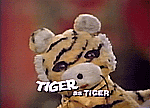I've been wanting to post about some of my favourite comic artists for a while, but I wanted to do it in a way which added something beyond just pretty pictures, so here are some pretty pictures which move and make noise. In the pipeline, and amongst other things, are Mark Beyer and Drew Friedman clips from Liquid Television, Alan Moore being interviewed by a twelve-year old on The Tube and (when I eventually find it) an animatic from Peter Bagge's uncommissioned Buddy Bradley cartoon.
I was prompted to find, and use, this particular interview by a post on the Lost In Manchester blog, which discussed 'ghost adverts', almost wiped away or preserved by accident (they were usually covered up by something which protected them from the ravages of man and time) painted advertisements on the sides and fronts of shops and other commercial properties. There are several around Manchester, periodically revealing themselves to those who look above the pavement, then disappearing forever or being shrouded again, waiting for the next festival or accidental revelation. Ben Katchor's art works in that domain - the deliberate illumination of hidden worlds which were once the mainstream but now lurk, moribund, above and behind the city's walls, streets and shop-fronts.
You can find his website here: http://www.katchor.com/ Those $25 signed posters look like good value for money.
About Ben Katchor, from Wikipedia.
Ben Katchor (born 1951 in Brooklyn, NY) is an American cartoonist. His comic strip Julius Knipl, Real Estate Photographer paints an evocative picture of a slightly surreal, historical New York City with a decidedly Jewish sensibility. Julius Knipl has been published in several book collections including Cheap Novelties: The Pleasure of Urban Decay and The Beauty Supply District. Other serialized comics by Katchor include The Jew Of New York (collected and published as a graphic novel in 1998), The Cardboard Valise and Hotel & Farm. He regularly contributes comics and drawings to The New Yorker, The New York Times, and Metropolis magazine. He was a contributor to RAW and published and edited two issues of Picture Story magazine, which featured his own work along with illustrated articles and stories by Peter Blegvad and Jerry Moriarty. He wrote and illustrated a "weeklong electronic journal" for Slate in 1997 and contributed articles to the now-defunct Civilization: The Magazine of the Library of Congress. His comics have been translated into French, Italian, German and Japanese. He currently draws a weekly strip, Shoehorn Technique, for The Forward.
In 1993 Katchor was the subject of a lengthy profile by Lawrence Weschler in the The New Yorker.[1] He won an Obie Award for his collaboration with Bang on a Can on The Carbon Copy Building, a "comic book opera" based on his writings and drawings that premiered in 1999. The same year, he was the subject of Pleasures of Urban Decay, a documentary by the San Francisco filmmaker Samuel Ball. In Michael Chabon's collected essays,Maps and Legends, (McSweeney's Books, 2008, San Francisco), he somewhat idiosyncratically describes Katchor as "the "creator of the last great American comic strip."
The first cartoonist to receive a MacArthur Fellowship, Katchor has also received a Guggenheim Fellowship and is a fellow of the American Academy in Berlin.
Katchor has written several works of musical theater, including The Rosenbach Company (a tragi-comedy about the life and times of Abe Rosenbach, the preeminent rare-book dealer of the 20th century) and The Slug Bearers of Kayrol Island, or, The Friends of Dr. Rushower, an absurdist romance about the chemical emissions and addictive soft-drinks of a ruined tropical factory-island. Both feature music by Mark Mulcahy.
Katchor also gives "illustrated lectures" at colleges and museums accompanied by slide projections of his work.
Partial Bibliography
Cheap Novelties: The Pleasures of Urban Decay (Penguin, 1991)
Julius Knipl, Real Estate Photographer: Stories (Little, Brown & Co., 1996)
Julius Knipl, Real Estate Photographer: The Beauty Supply District (Pantheon Books, 2000)
The Jew of New York (Pantheon Books, 1998)
Picture Story Magazine (editor and contributor) (Two issues, self-published, 1986)
His work also features in the CD booklet for R.E.M.'s 1991 release, Out of Time.
A new book, The Dairy Restaurant, is due later this year.





No comments:
Post a Comment